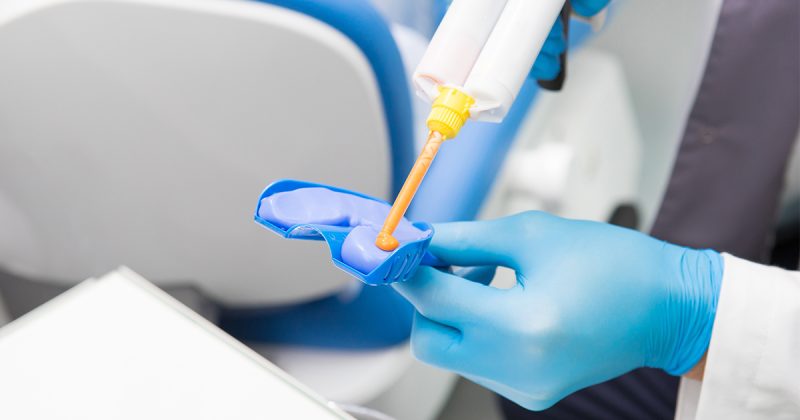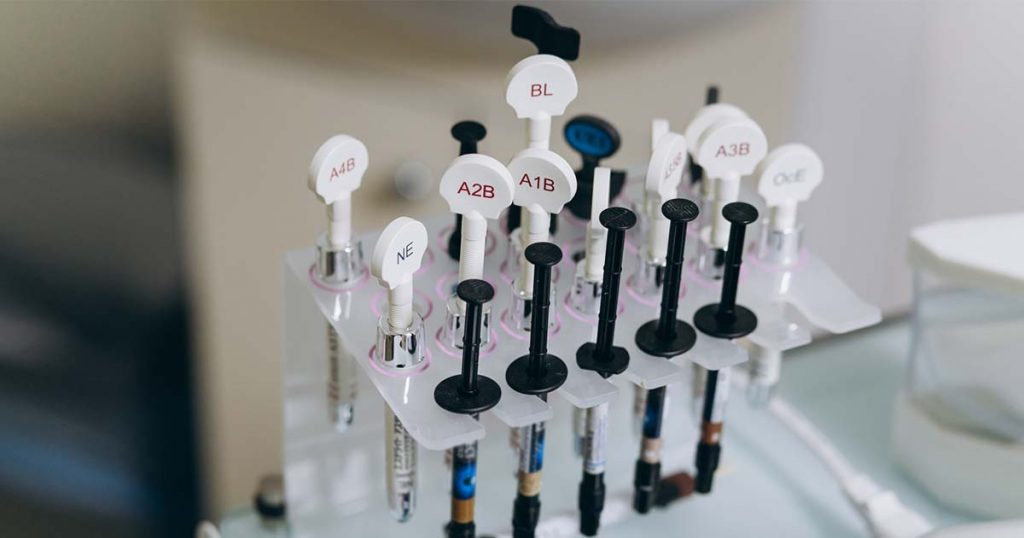Understanding Dental Product Shelf Life: When to Use, When to Discard

Ever reached for a bonding agent or impression material during a busy day and realized it expired last month? You’re not alone. Managing dental product shelf life is one of those behind-the-scenes details that can quietly impact your clinical success, infection control, and even patient safety.
For every product in dentistry, from cement to composite, there’s an assigned shelf life that ensures it will perform as intended. Using materials beyond the expiration date puts strength, setting time, or biocompatibility at risk creating substandard restorations and rework costs.
Let’s break down what shelf life really means, how to read it correctly, and helpful tips to get your inventory safe and efficient.
What Is “Shelf Life” in Dentistry?
Shelf life refers to the duration during which a dental product retains its expected physical, chemical, and biological properties under recommended conditions of storage.
That is how long your dental stuff remains safe and effective before it starts breaking down. They determine this by conducting stability tests, simulating months or years of storage at various temperatures and humidity.

Why Shelf-Life Matters
Using expired or improperly stored products not only costs money; it affects patient outcomes and clinic reputation. Here’s why it’s necessary:
- Clinical performance- Composites that have expired do not cure completely; impression materials become distorted.
- Patient safety- Chemical deterioration can cause irritation or allergic contact dermatitis.
- Bonding strength- Adhesives and cement deteriorate after expiration.
- Infection control- Disinfectants and sterilizing solutions have become ineffective.
- Financial loss- Stock waste and repeated procedures waste time and money.
Common Dental Products and Shelf Life
A rapid scan of dental material average shelf life (always check the label on the manufacturer’s package for exact times):
| Dental Product | Average Shelf Life | Storage Tips |
| Composite Resins | 2–3 years | Store in a dark, cool place (15–25°C). Do not expose yourself to heat or direct light. |
| Bonding Agents | 1–2 years | Tightly cap after use; store in refrigerator if advised. |
| Impression Materials (PVS/Alginate) | 1–3 years | Keep room temperature; store in a dry environment. |
| Cements (GIC/Resin-based) | 2 years | Avoid moisture; inspect any changes in consistency. |
| Etchants and Primers | 2 years | Store tightly capped; keep away from air exposure. |
| Disinfectants and Solutions | 1 year (after opening) | Mark the opening date on the bottle for easy tracking. |
| Sterilization Pouches | 1–2 years | Store in a clean, dust-free, and dry area. |
| Endodontic Sealers | 1–2 years | Keep away from direct heat and sunlight. |
| Impression Trays and Accessories | Indefinite (if sterile & sealed) | Discard if packaging is damaged or contamination is suspected. |
Tip: Date the opening on bottles and pouches, especially adhesives, disinfectants, and volatile ingredient-containing liquids.
Factors That Affect Shelf Life
- Even before they’ve hit their expiry date, various environmental and handling factors can lower a product’s effective lifespan.
- Temperature fluctuations – Chemical breakdown is speeded by heat and can result in separation or crystallization by freezing.
- Light exposure – Especially light-cured products such as composites and bonding agents.
- Contamination by air and humidity – Opening and closing of containers repeatedly expose the contents to oxygen or moisture.
- Cross-contamination – Use of contaminated instruments when handling material transfers bacteria and water.
- Inadequate capping – Containers with loose capping permit volatile ingredients to evaporate.
- An easy preventive practice? Keep sensitive products in a temperature-controlled cabinet or refrigerator (as instructed) and immediately reseal containers after each use.
When to Use and When to Discard
Remember: In uncertainty—discard it. The cost of retreating for an unsuccessful restoration is many times more than the replacement cost of a tube of composite.
Top Tips to Manage Dental Product Shelf Life
| Material Type | Check Before Use | Discard If You Notice |
| Composite Resins | Smooth texture, uniform color | Thickened, lumpy, or stained paste |
| Bonding Agents | Homogenous liquid | Separation of layers or unusual odor |
| Cements | Normal consistency | Hardened or runny paste |
| Impression Materials | Flowable and elastic | Lumps, uneven setting, or oily film |
| Etchants & Primers | Clear, uniform liquid | Cloudiness or crystallization |
| Disinfectants | Strong smell, clear solution | Discoloration or visible sedimentation |
| Endodontic Sealers | Smooth, even blend | Dried or cracked consistency |
| Irrigation Solutions | Expiry date valid and seal intact | Passed expiry or opened for over 3 months |
Working with dozens of products from numerous brands is frustrating. Below are 10 simple-to-adhere-to habits to be extremely organized:
Maintain a purchase and expiry date logbook (or digital tracker.
Use the “First In, First Out” policy (FIFO)—always use the oldest stock first.
Mark the opened bottles with the opening date with a marker.
Avoid buying in bulk—especially for items with short expiry periods like adhesives or disinfectants.
Store temperature-sensitive items in temperature-controlled cabinets or refrigerators.
Add desiccant packs to moisture-susceptible containers.
Segregate the stock from clinical-use products to limit handling.
Inspect for monthly expiry—outsourcing this to trained assistant.
Discard out-of-date products according to biomedical waste laws.
Buy from reputable suppliers (e.g., Dentalkart) that have fresh stock and transparent expiry information.
Fact:
A 2°C increase above the recommended temperature of storage has been found to cut the shelf life of a dental adhesive as much as 25%.
Most composite resins are light-activated—even operatory light will catalyze polymerization if the product is left uncapped.
Shelf-life indicators on packaging use the “hourglass” or “open jar” symbol—most dentists ignore these!
| Symbol | Meaning |
| ⏳ Hourglass | Expiry date (Use before this date) |
| 🧴 Open Jar (e.g., 6M, 12M) | Use within ‘x’ months after opening |
| 🌡️ Thermometer | Temperature-sensitive item |
| ☀️ Sun Crossed Out | Protect from light |
| ♻️ Recycling Symbol | Container material is recyclable |
Conclusion
Dental products are the backbone of clinical success, but even the best quality product will be a failure if used after the expiry date. Being aware of when to use and when to replace guarantees:
- Reliability of treatment quality
- Patient satisfaction and safety
- Economical stock management
By sticking to smart storage habits and tracking out-of-date timings, you can ensure your dental supplies and instruments always perform to the best of their ability.
So next time you’re restocking your shelves, remember shelf-life management isn’t just about saving supplies—it’s about saving your reputation
Frequently Asked Questions (FAQs)
Q1. Can I still use a product a few days after its expiry date?
Not recommended. The product may seem fine, but the chemical stability and performance cannot be guaranteed once you have crossed the expiry date.
Q2. Why do some products carry “Use-by” and others “Manufacture date”?
“Use-by” refers to the use-by date. In case only the “manufacture date” is given, refer to the label or product manual for shelf life (e.g., “24 months from manufacturing”).
Q3. Can refrigeration extend product shelf life?
Only if the manufacturer indicates so. Overcooling will cause condensation and reduced performance.
Q4. Do I keep all the products in the refrigerator?
No. Only adhesives, bonding agents, or resin cement with cold storage instruction need to be kept in the refrigerator.
Q5. How do I know that an online dental store is offering fresh stock?
Always check for clearly stated expiry dates and batch numbers. Good dealers like Dentalkart ensure clear information and secure shipping.

No Comment